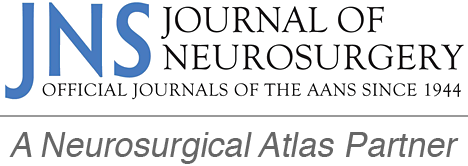Right Middle Fossa Approach
6973
Surgical Correlation
Tags
Right Middle Fossa Approach. A, The inset shows the skin incision and the craniotomy needed to expose the middle fossa floor. The middle fossa floor has been elevated and the MMA, GSPN, trigeminal nerve, superior petrosal sinus, and the petrous apex have been identified. B, The long axis of the GSPN has been marked with an interrupted red line. The IAM is located at a distance of approximately 1.7 cm from the lateral limit of V3, with an angle of 61° to the long axis of GSPN. Beginning drilling the IAM medially is safer than beginning laterally near the level of the geniculate ganglion, where the nerves are more superficial. C, The IAM has been opened and the nerves have been exposed from above by relying on its angle with the long axis of GSPN. The angle between the long axis of GSPN (red interrupted line) and the IAM (blue interrupted line) is 61°. D, The superior vestibular and the facial nerves have been exposed within the IAM along with the geniculate ganglion and the cochlea. The cochlea lies below the floor of the middle fossa in the angle between the labyrinthine segment of the facial nerve and the GSPN. The posterior border of the cochlea is the fundus of the IAM, and, posterolaterally, it is related to the geniculate ganglion. The cochlea should not be violated during the exposure of the lateral part of the IAM to preserve the hearing during a middle fossa approach. The bone over the tympanic segment of the facial nerve distal to the geniculate ganglion has been removed. E, The bone on the middle fossa floor has further been removed laterally to show the eustachian tube, the tensor tympani muscle, bony labyrinth, and the middle ear structures. The eustachian tube and the tensor tympani muscle lie side by side parallel to the GSPN in the space between the V3 anteriorly and the cochlea posteriorly. The bony labyrinth consists of 3 structures: the cochlea, the vestibule, and the SCCs. The vestibule, a small cavity at the confluence of the SCCs, is located in the central part of the bony labyrinth and situated posterolateral to the fundus of the IAM. The superior, lateral, and posterior SCCs are situated posterosuperior to the vestibule. The superior SCC, the one that is most intimately related to the middle fossa, projects toward the floor at the region of the arcuate eminence. F, The trigeminal nerve has been sectioned to expose the full course of the GSPN and the petrous ICA. The interrupted red line corresponds to the posterolateral limit of the V3 and the GSPN passes 1.7 cm from this point to the geniculate ganglion (marked with a red star). The cochlea (marked with a blue arrow) and the vestibule (marked with a green arrow) are the main structures to be preserved during the middle fossa approach. The petrous segment of the ICA passes under the petrolingual ligament to enter the cavernous sinus. The petrolingual ligament has been removed; however, the approximate position has been shown in the blue area. (Images courtesy of AL Rhoton, Jr.)




